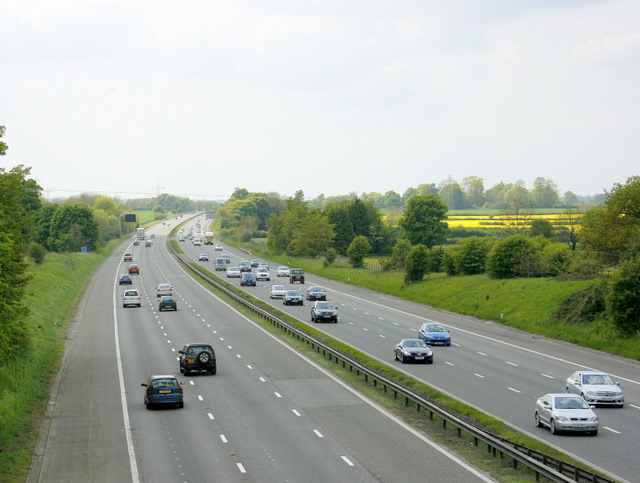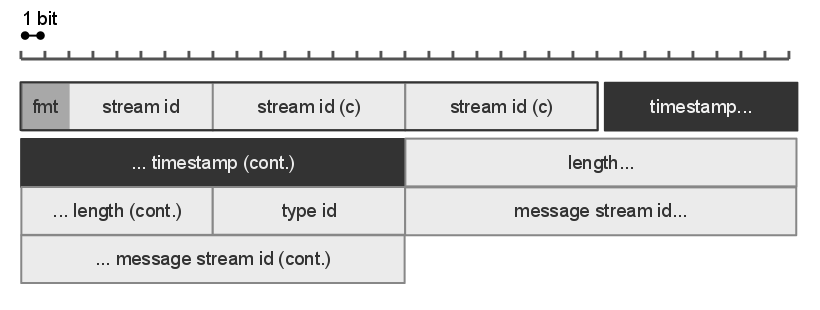|
TV Network Protocol
The TV Network Protocol or TVNP as it is more commonly referred to is an open Communications protocol, network protocol developed to enable Closed-circuit television, CCTV systems from any manufacturer to be integrated into an existing CCTV network. It provides high levels of support for audio routing, Patch panel#Switchers, video routing and camera control. The protocol was developed by Philips, Philips Projects (now Tyco International, Tyco Integrated Systems) on behalf of the Traffic Control Systems Unit (TCSU), now a part of Transport for London (TfL). Tyco acts as the standards and approvals house for companies who want to implement the protocol. The protocol's roots can be traced back to the Highways Agency HDLC standard. It is the property of TfL and is independent of any supplier. As of late of 2011 there are at least eight manufacturers who have a partial or full TVNP interface, including: * BAE Systems (previously Petards) * Chubb (previously Initial Fire and Security) * ... [...More Info...] [...Related Items...] OR: [Wikipedia] [Google] [Baidu] |
Communications Protocol
A communication protocol is a system of rules that allows two or more entities of a communications system to transmit information via any kind of variation of a physical quantity. The protocol defines the rules, syntax, semantics and synchronization of communication and possible error recovery methods. Protocols may be implemented by hardware, software, or a combination of both. Communicating systems use well-defined formats for exchanging various messages. Each message has an exact meaning intended to elicit a response from a range of possible responses pre-determined for that particular situation. The specified behavior is typically independent of how it is to be implemented. Communication protocols have to be agreed upon by the parties involved. To reach an agreement, a protocol may be developed into a technical standard. A programming language describes the same for computations, so there is a close analogy between protocols and programming languages: ''protocols ar ... [...More Info...] [...Related Items...] OR: [Wikipedia] [Google] [Baidu] |
Closed-circuit Television
Closed-circuit television (CCTV), also known as video surveillance, is the use of video cameras to transmit a signal to a specific place, on a limited set of monitors. It differs from broadcast television in that the signal is not openly transmitted, though it may employ point-to-point (P2P), point-to-multipoint (P2MP), or Mesh networking, mesh wired or Wireless, wireless links. Even though almost all video cameras fit this definition, the term is most often applied to those used for surveillance in areas that require additional security or ongoing monitoring (Videotelephony is seldom called "CCTV"). Surveillance of the public using CCTV is common in many areas around the world. In recent years, the use of body worn video cameras has been introduced as a new form of surveillance, often used in law enforcement, with cameras located on a police officer's chest or head. Video surveillance has generated significant debate about balancing its use with individuals' right to privac ... [...More Info...] [...Related Items...] OR: [Wikipedia] [Google] [Baidu] |
Patch Panel
A patch panel is a device or unit featuring a number of jacks, usually of the same or similar type, for the use of connecting and routing circuits for monitoring, interconnecting, and testing circuits in a convenient, flexible manner. Patch panels are commonly used in computer networking, recording studios, and radio and television. The term ''patch'' came from early use in telephony and radio studios, where extra equipment kept on standby could be temporarily substituted for failed devices. This reconnection was done via patch cords and patch panels, like the jack fields of cord-type telephone switchboards. Terminology They are also referred to as a patch bay, patch field, jack panel or jack field. Uses and connectors In recording studios, television and radio broadcast studios, and concert sound reinforcement systems, patchbays are widely used to facilitate the connection of different devices, such as microphones, electric or electronic instruments, effects (e.g. compre ... [...More Info...] [...Related Items...] OR: [Wikipedia] [Google] [Baidu] |
Philips
Koninklijke Philips N.V. (), commonly shortened to Philips, is a Dutch multinational conglomerate corporation that was founded in Eindhoven in 1891. Since 1997, it has been mostly headquartered in Amsterdam, though the Benelux headquarters is still in Eindhoven. Philips was formerly one of the largest electronics companies in the world, but is currently focused on the area of health technology, having divested its other divisions. The company was founded in 1891 by Gerard Philips and his father Frederik, with their first products being light bulbs. It currently employs around 80,000 people across 100 countries. The company gained its royal honorary title (hence the ''Koninklijke'') in 1998 and dropped the "Electronics" in its name in 2013, due to its refocusing from consumer electronics to healthcare technology. Philips is organized into three main divisions: Personal Health (formerly Philips Consumer Electronics and Philips Domestic Appliances and Personal Care), Connecte ... [...More Info...] [...Related Items...] OR: [Wikipedia] [Google] [Baidu] |
Tyco International
Tyco International plc was a security systems company incorporated in the Republic of Ireland, with operational headquarters in Princeton, New Jersey, United States (Tyco International (US) Inc.). Tyco International was composed of two major business segments: security solutions and fire protection. On January 25, 2016, Johnson Controls announced it would merge with Tyco, and all businesses of Tyco and Johnson Controls would be combined under Tyco International plc, to be renamed as Johnson Controls International plc. The merger was completed on September 9, 2016. Timeline 1960s Founded by Arthur J. Rosenberg in 1960, Tyco, Inc. was formed as an investment and holding company with two segments: Tyco Semiconductors and The Materials Research Laboratory. In the first two years of operation, the company focused primarily on governmental research and military experiments in the private sector. In 1962, the business was incorporated in Massachusetts and refocused on high-tech ... [...More Info...] [...Related Items...] OR: [Wikipedia] [Google] [Baidu] |
Highways Agency
National Highways, formerly the Highways Agency and later Highways England, is a State-owned enterprise, government-owned company charged with operating, maintaining and improving Roads in England, motorways and major A roads in England. It also sets highways standards used by all four UK administrations, through the Design Manual for Roads and Bridges. Within England, it operates information services through the provision of on-road signage and its Traffic England website, provides National Highways traffic officer, traffic officers to deal with incidents on its network, and manages the delivery of improvement schemes to the network. Founded as an executive agency, it was converted into a government-owned company, Highways England, on 1 April 2015. As part of this transition, the Government of the United Kingdom, UK government set out its vision for the future of the English strategic road network in its Road Investment Strategy. A second Road Investment Strategy was published ... [...More Info...] [...Related Items...] OR: [Wikipedia] [Google] [Baidu] |
Costain Group
Costain Group plc is a British construction and engineering company headquartered in Maidenhead, England. Founded in 1865, its history includes extensive housebuilding and mining activities, but it later focused on civil engineering and commercial construction projects. It was part of the British/French consortium which constructed the Channel Tunnel at the end of the 1980s, and has been involved in Private Finance Initiative projects. History 19th century The business was founded in 1865 when Richard Costain and his future brother-in-law, Richard Kneen, left the Isle of Man and moved to Liverpool as jobbing builders. The partnership lasted until 1888, when Richard Kneen left and Richard Costain's three sons (Richard, William and John) joined him.Wellings, Fred. ''Dictionary of British Housebuilders'' (2006) Troubador. By the time of the First World War Costain had expanded through Lancashire and into South Wales, where it built houses for munitions workers. 20th century After ... [...More Info...] [...Related Items...] OR: [Wikipedia] [Google] [Baidu] |
RS-232
In telecommunications, RS-232 or Recommended Standard 232 is a standard originally introduced in 1960 for serial communication transmission of data. It formally defines signals connecting between a ''DTE'' (''data terminal equipment'') such as a computer terminal, and a ''DCE'' (''data circuit-terminating equipment'' or ''data communication equipment''), such as a modem. The standard defines the electrical characteristics and timing of signals, the meaning of signals, and the physical size and pinout of connectors. The current version of the standard is ''TIA-232-F Interface Between Data Terminal Equipment and Data Circuit-Terminating Equipment Employing Serial Binary Data Interchange'', issued in 1997. The RS-232 standard had been commonly used in computer serial ports and is still widely used in industrial communication devices. A serial port complying with the RS-232 standard was once a standard feature of many types of computers. Personal computers used them for connecti ... [...More Info...] [...Related Items...] OR: [Wikipedia] [Google] [Baidu] |
Hypertext Transfer Protocol
The Hypertext Transfer Protocol (HTTP) is an application layer protocol in the Internet protocol suite model for distributed, collaborative, hypermedia information systems. HTTP is the foundation of data communication for the World Wide Web, where hypertext documents include hyperlinks to other resources that the user can easily access, for example by a mouse click or by tapping the screen in a web browser. Development of HTTP was initiated by Tim Berners-Lee at CERN in 1989 and summarized in a simple document describing the behavior of a client and a server using the first HTTP protocol version that was named 0.9. That first version of HTTP protocol soon evolved into a more elaborated version that was the first draft toward a far future version 1.0. Development of early HTTP Requests for Comments (RFCs) started a few years later and it was a coordinated effort by the Internet Engineering Task Force (IETF) and the World Wide Web Consortium (W3C), with work later movi ... [...More Info...] [...Related Items...] OR: [Wikipedia] [Google] [Baidu] |
Real-Time Messaging Protocol
Real-Time Messaging Protocol (RTMP) is a communication protocol for streaming audio, video, and data over the Internet. Originally developed as a proprietary protocol by Macromedia for streaming between Flash Player and the Flash Communication Server, Adobe (which acquired Macromedia) has released an incomplete version of the specification of the protocol for public use. The RTMP protocol has multiple variations: # RTMP proper, the "plain" protocol which works on top of Transmission Control Protocol (TCP) and uses port number 1935 by default. # RTMPS, which is RTMP over a Transport Layer Security (TLS/SSL) connection. # RTMPE, which is RTMP encrypted using Adobe's own security mechanism. While the details of the implementation are proprietary, the mechanism uses industry standard cryptographic primitives. # RTMPT, which is encapsulated within HTTP requests to traverse firewalls. RTMPT is frequently found utilizing cleartext requests on TCP ports 80 and 443 to bypass most corp ... [...More Info...] [...Related Items...] OR: [Wikipedia] [Google] [Baidu] |
Real Time Streaming Protocol
The Real Time Streaming Protocol (RTSP) is an application-level network protocol designed for multiplexing and packetizing multimedia transport streams (such as interactive media, video and audio) over a suitable transport protocol. RTSP is used in entertainment and communications systems to control streaming media servers. The protocol is used for establishing and controlling media sessions between endpoints. Clients of media servers issue commands such as ''play'', ''record'' and ''pause'', to facilitate real-time control of the media streaming from the server to a client (video on demand) or from a client to the server (voice recording). History RTSP was developed by RealNetworks, Netscape and Columbia University. The first draft was submitted to IETF in October 1996 by Netscape and Progressive Networks, after which Henning Schulzrinne from Columbia University submitted "RTSP'" ("RTSP prime") in December 1996. The two drafts were merged for standardization by the Multipa ... [...More Info...] [...Related Items...] OR: [Wikipedia] [Google] [Baidu] |





